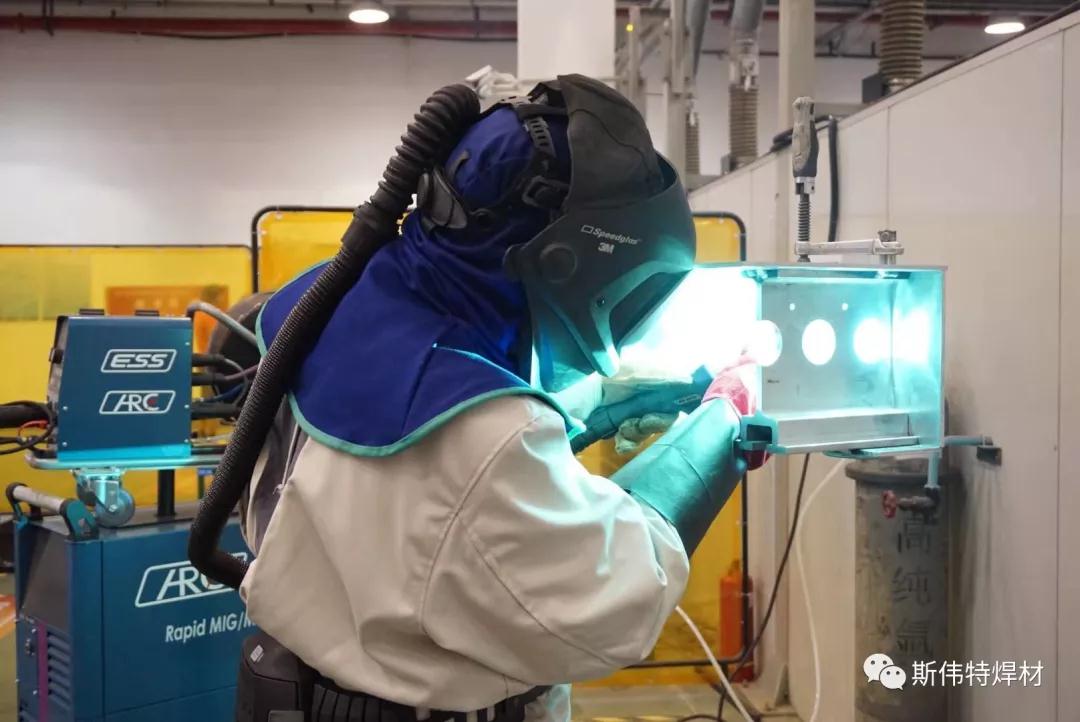The difference between MIG welding and MAG welding

a woman with helmet is MIG welding or MIG weld
In robotic arc welding, the use of molten gas-shielded welding is the most widespread. According to the type of shielding gas, we usually divide it into two groups – MIG welding and MAG welding.
Some beginners in welding may confuse MIG welding and MAG welding. In this article, we will make it clear.
What is MIG welding?
Molten inert gas shielded welding is short for MIG welding.
It is an arc welding process that uses a continuous, consumable solid wire electrode which is heated and fed into the welding pool.
The shielding gas is argon, helium, or a mixture of argon and helium.
Both argon and helium are inert gas, which do not react metallurgically with liquid metal.
It only plays an important role in protecting the welding area to isolate it from the air.
Therefore, we will get a very stable arc, smooth metal transition, and little spatter. This method is especially suitable for the welding of non-ferrous metals, such as aluminum, copper, titanium, and other metals.
What is MAG welding?
Molten active gas shielding welding, short for MAG welding, is also an arc welding process. It also uses a continuous and consumable filler wire.
The only difference is that the shielding gas it uses is a mixture of inert gas and a small amount of oxidizing gas. The oxidizing gas is also called active gas. Since the shielding gas is oxidizing, it is often used for welding ferrous metals.
The purpose of mixing a small amount of oxidizing gas with the inert gas is to further improve the stability of the arc and weld formation and to reduce the radiation intensity of the arc without basically changing the characteristics of the inert gas arc.
The main difference between MIG welding and MAG welding
After all of the above analysis, we would reach a conclusion on the question. The biggest difference between MIG and MAG welding is the shielding gas involved.
MIG welding, with inert gas, usually welds no ferrous metal, such as aluminum and copper.
MAG welding, with active gas, usually welds ferrous metal, such as stainless steel and low-carbon alloy.
The similarity is that both MIG and MAG are ace welding and use consumable filler metal wire.
For more information on aluminum MIG welding, please click here to get detailed process.
http://www.focusweld.com/pulse-mig-welding-aluminum-alloy

